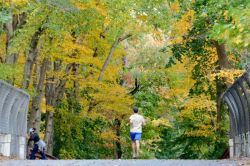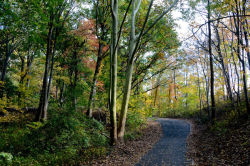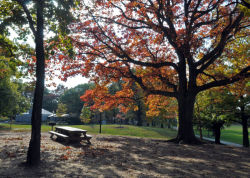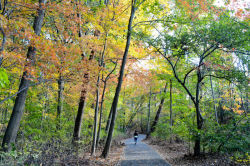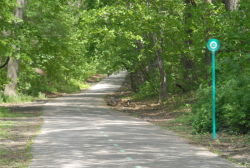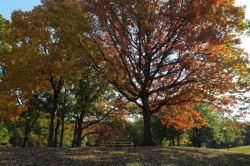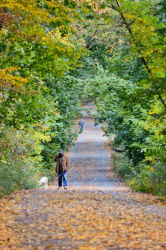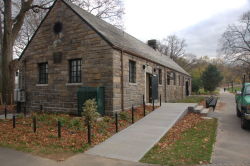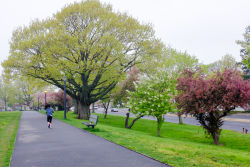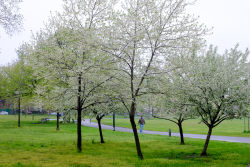Cunningham Park
The Forests of New York City - Cunningham Park
There are roughly 1,000 acres of forest in Queens, which are divided almost evenly between Forest, Cunningham, and Alley Pond Parks. All three parks in Queens are on the terminal moraine, the ridge that marks the furthest advance of a glacier, and share the knob and kettle topography: rounded hills (knobs) alternating with bowl-shaped depressions (kettles) typical of these landscapes. Queens’s parks also have in common the forest types that are typical of terminal moraine landscapes – dry oak-hickory forests on the knobs, rich forests in the kettles, and often red maple-hardwood swamps when kettle ponds are present.
Most of the forest in Cunningham Park is successional, which means that the land has been cleared or otherwise disturbed. The result is that the canopy layer of trees, the highest level providing leafy coverage, has not been able to reproduce. One area of Cunningham Park with mature forest is the Southern Woods, along Francis Lewis Boulevard and Union Turnpike. It contains an oak-hickory and rich forest typical of knob and kettle terrain, but the forest is exceptionally undisturbed. There is not a lot of visitation to this small forest, so the ground cover is still in excellent condition.
Oak-hickory forests occur on well-drained sites, often on ridge tops, upper slopes, or south and west facing slopes. The soils are usually loams (mixtures of clay, sand, silt, and organic matter). Red (Quercus rubra), black (Q. velutina), white (Q. alba) oaks, or their hybrids are dominant. Red oak commonly grows on moister soils at the bottom of slopes, black oak on mid-slopes, and white oak on drier ridge tops.
Rich forests can be found on fertile, moist, well-drained soils, which are favorable for the dominance of a wide variety of tree species. There are a number of variations of this community in which only a few species dominate. Oak-tulip stands are dominated by tulip tree (Liriodendron tulipifera), red maple (Acer rubrum), and red and black oaks. Beech-maple stands are dominated by sugar maple (Acer saccharum) and American beech (Fagus grandifolia), which tend to occur on acidic soils.
Check out your park's Vital Signs
Clean & Safe
Green & Resilient
Empowered & Engaged Users
Share your feedback or learn more about how this park is part of a
Vital Park System
Contacts
Cunningham Park: (718) 217-6452

